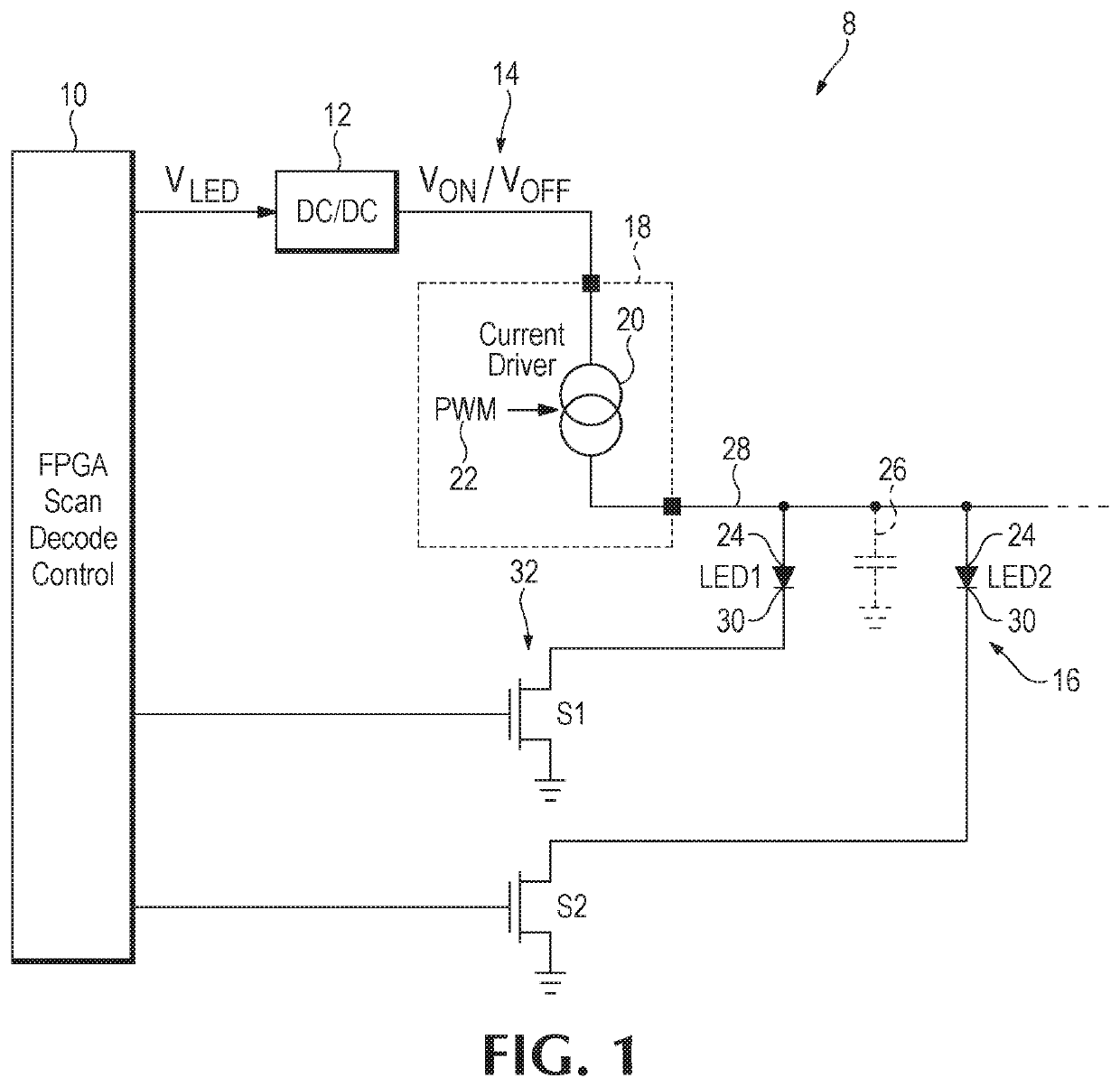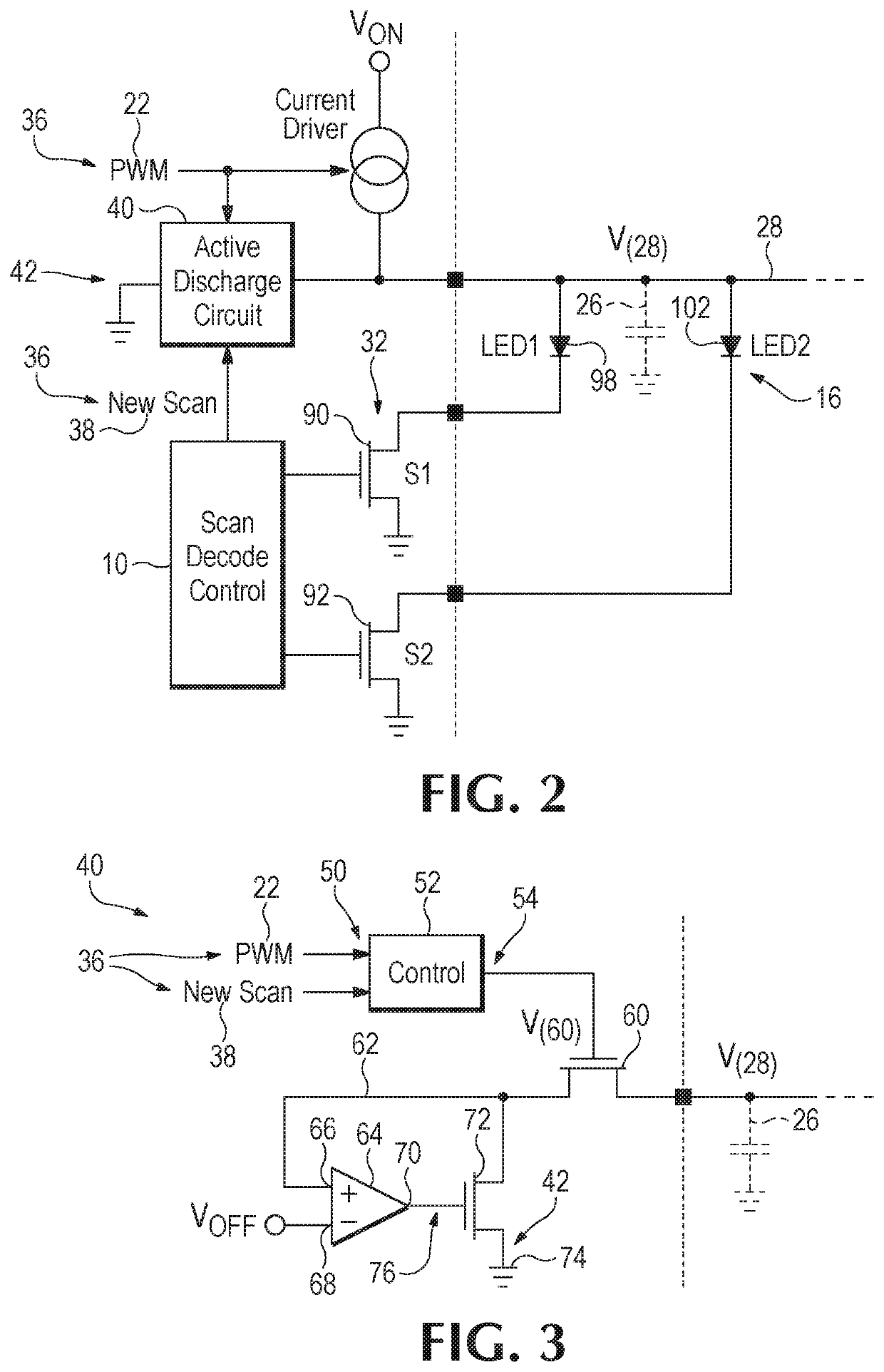Active discharge circuitry for display matrix
a technology of active discharge circuitry and display matrix, which is applied in the direction of static indicating devices, electrical appliances, instruments, etc., can solve the problems of time-multiplexing display system, side effects such as ghosting, spike noise, or phantom noise, and unwanted lighting emission, so as to facilitate discharge activities, reduce ghosting effects, and accelerate charge discharg
- Summary
- Abstract
- Description
- Claims
- Application Information
AI Technical Summary
Benefits of technology
Problems solved by technology
Method used
Image
Examples
first embodiment
[0026]FIG. 4 is a timing diagram 80 showing signal timing for performing active ghost elimination according to a For channel 28 shown in FIGS. 2 and 3, as a trailing edge 82 (falling edge) of PWM signal 22 is detected by active discharge control logic 52 (FIG. 3), active discharge control logic 52 changes a state (i.e., from low to high) of active discharge control signal V(60). Active discharge control signal V(60) is then applied by controller output 54 to the gate of switch 60 (FIG. 3), which is thereby actuated to start the active discharge operation described previously. The operation may then end after a specific clock-counting period (or other predetermined discharge time), or it may end at a leading edge 84 of a new scan cycle indicated by new scan signal 38. Skilled persons will appreciate that a similar sequence and circuitry may also be implemented for other channels in a multi-channel system.
[0027]For completeness, also shown in FIG. 4 are a first scan signal 86 and a s...
second embodiment
[0028]FIG. 5 is a timing diagram 110 showing signal timing for performing active ghost elimination according to a In this embodiment, new scan signal 38 initiates and stops the active discharge operation. A new scan signal is typically generated as a single grayscale clock (GCLK) pulse wherein the leading edge occurs one clock pulse width before the completion of the current scan and the trailing edge is synchronized with the completion of the current scan. Additional description of an example of a GCLK and its relationship with PWM and scan timing is available in International Application Publication No. WO 2018 / 098036 titled “Intensity Scaled Dithering Pulse Width Modulation,” of Nadershahi.
[0029]The described features, operations, or characteristics may be arranged and designed in a wide variety of different configurations or combined in any suitable manner in one or more embodiments. Thus, the detailed description of the embodiments of the systems and methods is not intended to...
PUM
 Login to View More
Login to View More Abstract
Description
Claims
Application Information
 Login to View More
Login to View More - R&D
- Intellectual Property
- Life Sciences
- Materials
- Tech Scout
- Unparalleled Data Quality
- Higher Quality Content
- 60% Fewer Hallucinations
Browse by: Latest US Patents, China's latest patents, Technical Efficacy Thesaurus, Application Domain, Technology Topic, Popular Technical Reports.
© 2025 PatSnap. All rights reserved.Legal|Privacy policy|Modern Slavery Act Transparency Statement|Sitemap|About US| Contact US: help@patsnap.com



